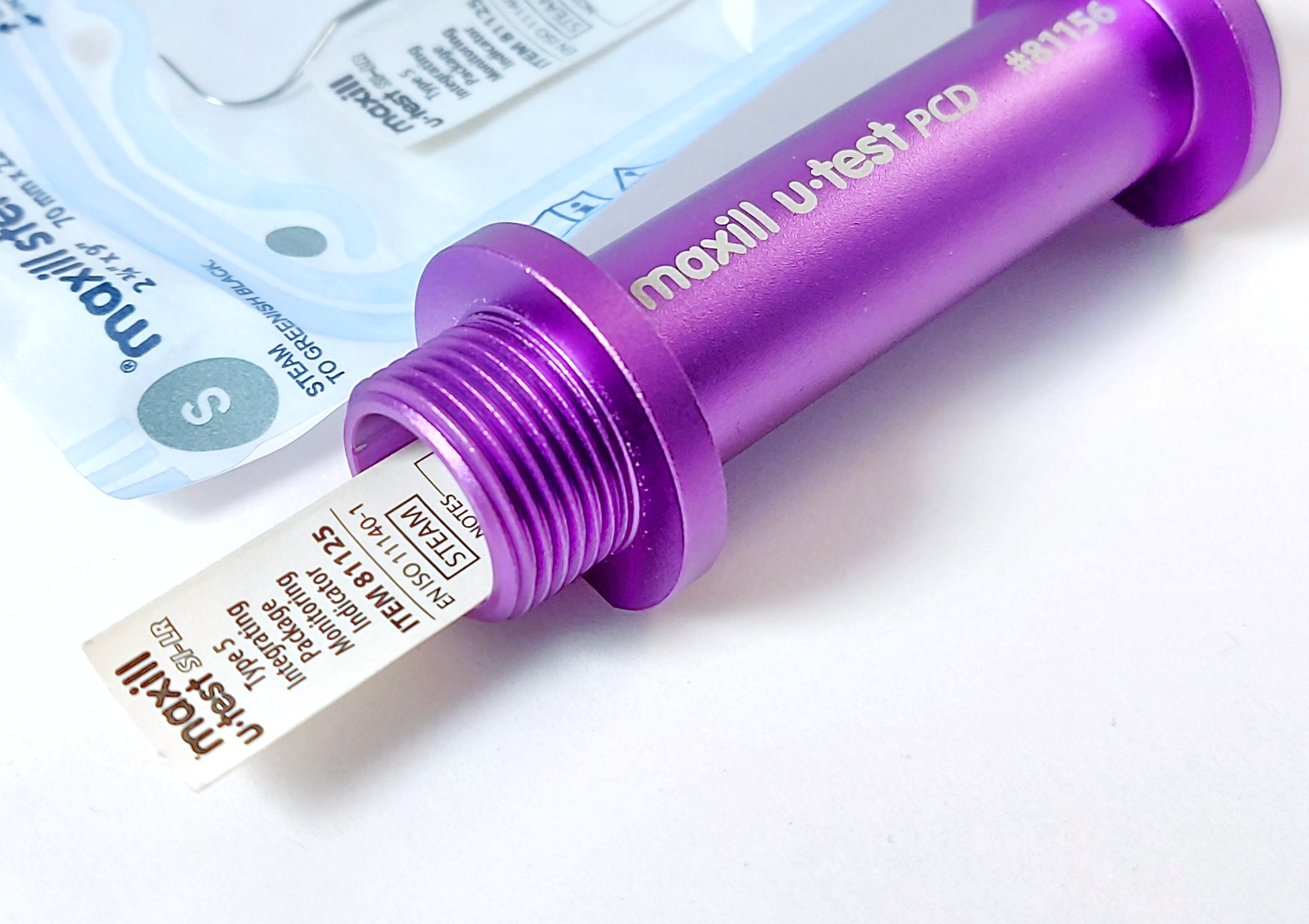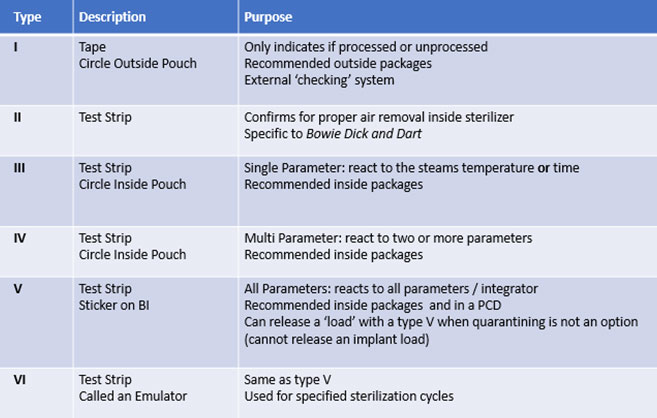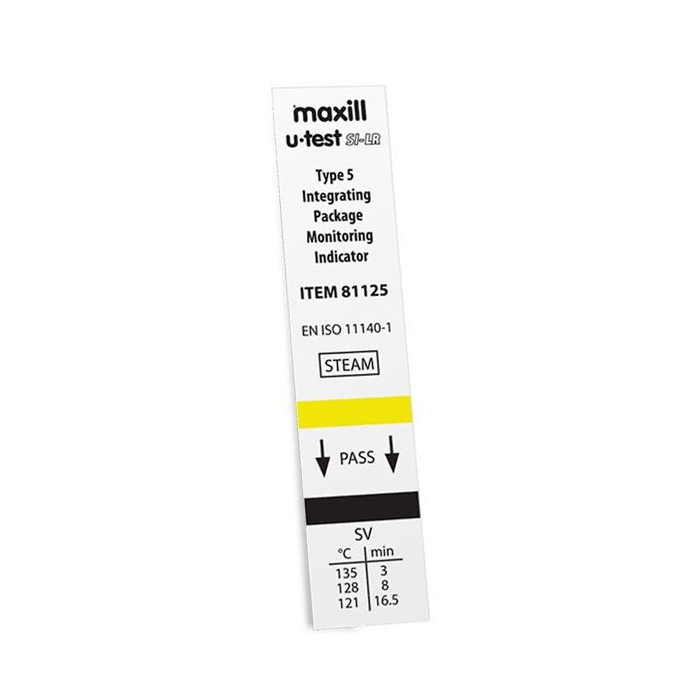Process Challenge Devices For Sterilization: Do You Still Need a Type V Chemical Indicator In Every Pouch?

I have had many inquiries about the use of our Process Challenge Device (PCD) in relation to a Type V chemical indicator(CI).
The burning question is: does a Type V chemical indicator still need to be placed in every package?
The best approach to answering this question is to step back and review the job of the chemical indicators.
Have a look at the table below for the type and purpose of each chemical indicator.
What is the Difference Between a Type IV and a Type V Chemical Indicator (CI)?
An external indicator (type I CI) is required on the outside of ALL packages.
An internal indicator is required on the inside of ALL packages (a Type IV CI or a Type V CI).
The first reflection point is the difference between a Type IV CI and a Type V CI. A Type IV CI measures only two parameters of sterilization whereas a Type V CI measures all three; time, temperature and pressure.
Out of these two chemical indicators which one offers the optimal measurement of sterilization parameters?
Indeed, a Type V CI.
Since a Type V CI measures all three parameters, it can be used to release a load while awaiting the results of a biological indicator (BI).

There are many questions circulating about when and where to use the different kinds of chemical indicators.
Some of the most common questions we get around chemical indicators are:
- Does a Type V CI need to be placed in a package as the internal indicator?
- Can a Type IV CI be placed instead of a Type V CI?
- If the sterilization pouch already comes with an external Type I CI and internal Type IV CI does it need a Type V CI inserted?
- If the package is a wrapped cassette and has an external Type I CI does the internal have to be a Type IV CI or a Type V CI?
And the main question: Is a Type V CI needed in every package if a Type V CI is used in a PCD?
Related: What is a Process Challenge Device (PCD) for Sterilization Monitoring?
What Chemical Indicators Are Needed When Using a Process Challenge Device (PCD)?
Almost all the questions around what chemical indicators are needed when using a PCD can be answered from a best practice approach.
Both the Canadian Dental Hygienist Association 2 and the Royal College of Dental Surgeons of Ontario1 recommend using a Type V CI in both a PCD and in every package, especially when releasing the package right away.
Let's explore why so we can better understand these best practice recommendations.
Without even looking at the variables of mechanical monitoring and process challenging devices, which chemical indicator will offer the highest quality assurance?
A Type V CI!
Long before IPAC changes and the introduction of a PCD in a dental office setting, many educational facilities had already set the standard of a Type V CI in every package, along with a mechanical reader, and with the use of a PCD.
Why?
It’s a risk management approach.
It is the best of the best practice to offer safeguarding for the dental office and as quality assurance to the client.
Related: Process Challenge Devices for Sterilization: Are you Challenging Your Sterilizer Enough?
Batch Monitoring VS Package Monitoring: The Two Jobs of a Type V CI
The second reflection point is identifying and realizing that a Type V CI has two monitoring jobs:
Batch Monitoring and Package Monitoring (load leader and package leader).
One does not eliminate the other and vice versa.
That is why the best practice is to use a Type V CI in its two allocated roles.
1. Type V CI in a PCD (Batch Monitoring) in every load, for every cycle, recorded on a log sheet. The role of batch monitoring is to clear the entire load.
2. Type V CI in every package (Package Monitoring), The role of package monitoring is to clear every package post sterilization and at point of use QA.
Variations of this explanation are offered in many IPAC resources that place ‘conditions’ on a Type V CI based on the use of a PCD, mechanical monitoring (printer/reader) as well as if the packages will be quarantined or released right away.
Some resources state at minimum a Type IV, this could be expanded to add ‘at maximum’ a Type V CI!
Quarantining could be viewed as the true factor in the equation to use a Type IV CI and to NOT place a Type V CI in every package.
However, some offices prefer to go above and beyond best practice and will continue to place a Type V regardless of any of the presented conditions.
To Sum it Up
In conclusion, a Type V CI in a PCD does NOT excuse the use of a Type V CI in every package.
These are two different jobs that work together as a complete quality assurance approach.
A Type V CI’s two roles are, in essence, quality assurance on the quality assurance.
Chemical indicators in a PCD and in a package are part of the quality assurance of sterilization monitoring that falls under risk management.
The goal of risk management is to identify and reduce or remove risks where applicable and possible.
Allowing the Type V to do both its jobs is a risk management approach.
Sources:











